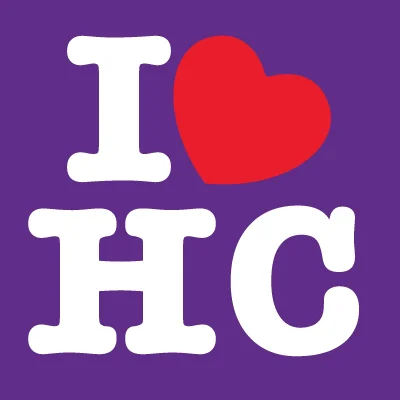Giving days are an appealing supplement to traditional giving campaigns. Their compactness and immediacy makes them satisfying both for our alumni and for those of us who organize them.
But investing all that time and energy into one day can feel like a huge gamble. That's why we talked to folks at Holy Cross about how they exceeded their participation goal by 50% in their most recent giving day campaign.
Holy Cross Associate Director of Advancement Communications Amy Kotsopoulos and Associate Director of College Marketing, Communications, and Web Communications Christian R. Santillo recently presented on their offices' work at the Higher Ed Web Conference. We asked them to discuss Holy Cross's "I Love Holy Cross" giving day.
To start, could you summarize the “I Love Holy Cross” campaign for us? How did it start, and what were your goals?
Giving challenges are not new to Holy Cross. Over the last decade, our advancement office had completed a number of successful efforts with the main goal of increasing alumni participation. Thanks to these efforts, Holy Cross has consistently ranked in the top 10 nationally for alumni participation (50%)—a point of pride for the College, and a good gauge of overall alumni satisfaction.
Although our goal has been consistent, our approach has evolved considerably. The earlier challenges took place over longer periods of time using mail, the alumni magazine, and emails. As technology improved and social media became powerful tool in the fundraising arsenal, efforts that typically took months to complete could now be done within hours.
“I Love Holy Cross” is the most recent challenge completed. Even its theme was borrowed from a previous effort that we knew resonated well with our alumni. So instead of reinventing the wheel, we revived, renewed, and refreshed something that had already proved to be successful.
What preparations did you Make to make the campaign successful? How did other offices collaborate with you?
We wanted our decisions to be data-driven. We looked at performance and engagement data both from previous campaigns and from our overall communications with alumni. A few examples:
Over the course of the last few years, we knew that our email open rates with alumni was strong (32%) compared to industry averages, allowing us to rely on email to engage alumni throughout the day as well as days leading up February 14.
With this being a day-of-giving, social media would be an important component of the day, especially Facebook. However, looking at Facebook’s recent algorithm changes, we saw that reach dropped precipitously on days when posting multiple times per day. Armed with this data, we made the strategic decision to only post once on Facebook during the entire day (at launch) and use paid boosts, commenting, and targeting advertising on Facebook throughout the day. Ultimately, this yielded a reach of nearly 60,000 vs. our average of 6,000.
Holy Cross spent $662 on Facebook ads, only half their ad budget for the day.
Identify your project team. For us, our team was assembled and led by our Director of Advancement Communications and included members of the Development, Alumni Relations, Marketing and Communications, and Athletics teams. Ensuring you have the right stakeholders and producers / topic-experts at the table from the beginning in key. But it’s also a balance, too many people can dilute a creative or strategic conversation. This project team was also our “day-of” team. Scheduling a conference room for the entire day, we agreed to meet at regular check-in points throughout day to assess our status and make any changes to our communications plan or strategy as needed.
Creating a comprehensive communications plan is also absolutely vital. It doesn’t have to be fancy. We created a Google Sheet which included information such as medium (social, email, etc.) date, time, who was posting, from what account, what art, what content, URL, etc. This document was then shared with all who were responsible for communicating on that day, ensuring our plan was being followed.
Holy Cross developed a timeline for releasing videos promoting and celebrating their campaign.
What were the outcomes of the campaign? What worked and what didn’t?
We set a challenge goal of 4,000 donors, something that we felt confident we could achieve based on previous years’ data. We exceeded our goal by over 2,000 donors! Much of our day-of communications effort was focused on social media. We took advantage of paid ads and boosted posts and leveraged the reach of the college’s main platforms. We did underutilize email updates. After reviewing the data, it was clear that the emails did help sustain the donor momentum, and we will send more emails during the next challenge.
The challenge did help in our efforts to get more donors to donate earlier in the fiscal year, which allowed gave us more breathing room with our end of fiscal giving effort. It also provides an opportunity to engage with our already donors. However the number of new donors we yielded was small.
It is very important for institutions thinking about doing a challenge to set its goal early on, know investment costs upfront and then determine if the ROI is worth it. For Holy Cross, maintaining its participation ranking is worth it, so we will be doing this all over again in January.
What advice would you offer to schools contemplating their own campaign similar to I Love Holy Cross?
Plan, plan, plan, and plan again! Do a deep dive into your historical and current data and make decisions based on that. Leverage in-house resources as much as possible. Be creative. And most of all, have fun!
Read more about the I Love Holy Cross campaign here. You can find Holy Cross's videos for the campaign on YouTube.




